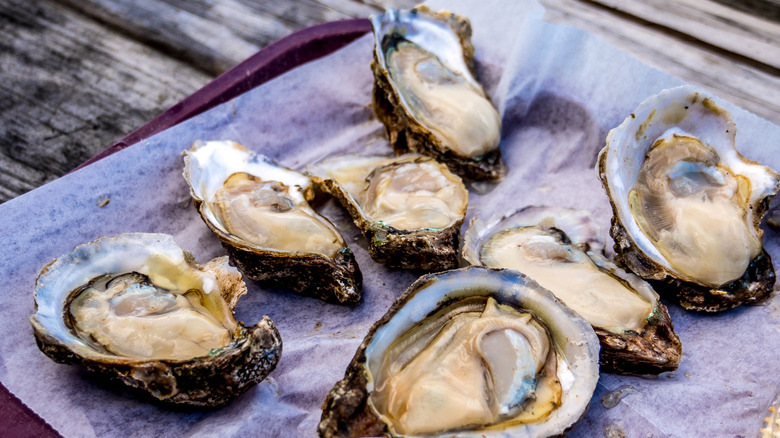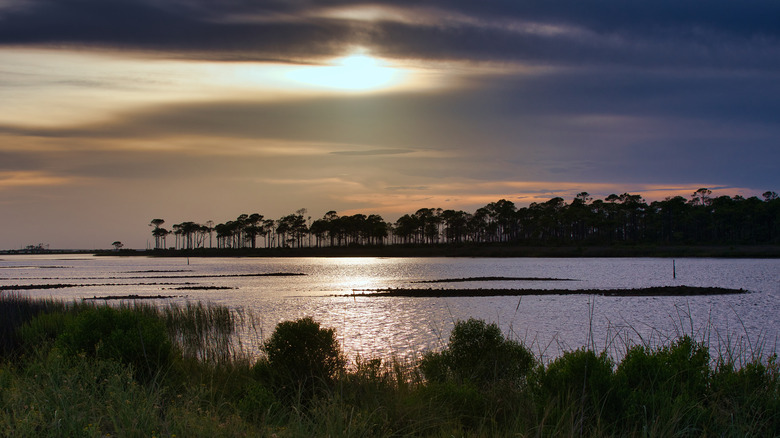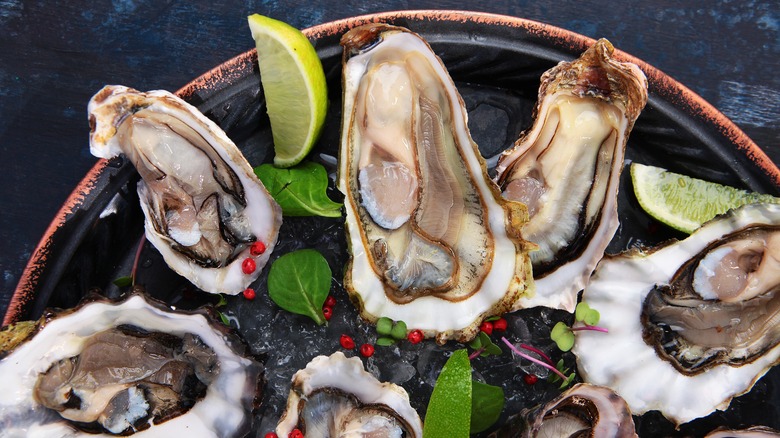Why Florida Has Stopped Harvesting Apalachicola Oysters
Apalachicola Bay is tucked into the northwest side of St. George Island in Florida, where it is a unique estuarine ecosystem that has historically facilitated the growth of some of the country's best oysters. Thanks to the meeting of freshwater and saltwater in the bay, Apalachicola oysters are uniquely tasty. They have previously accounted for 90% of the oysters available in restaurants and retail across Florida and 10% of oysters across the nation.
Located between the island and the town of Apalachicola is the bay in question — 208 square miles of prime oyster-growing waters. Apalachicola has been called "oyster town" and was heralded by some as the oyster capital of the world. But in 2020, the state of Florida imposed a moratorium on harvesting these delectable oysters, in effect until 2025. Officials across disciplines are working hard to make sure that this halt is just a temporary pause, not a permanent end, to Apalachicola Bay's beloved oyster fishery.
The Apalachicola Bay is the perfect environment to grow healthy and flavorful oysters
Apalachicola Bay oysters are both economically and culturally significant. They represent critical income for the oyster harvesters in Florida, a coastal state where fisheries are an important industry. Oysters are also a beloved dietary staple for people who enjoy the oysters' salty punch all across the country.
The environment an oyster is grown greatly impacts its taste and quality. St. George Island provides a perfect barrier between the bay and the ocean, creating a safe haven for oysters. Meanwhile, the freshwater rivers bring nutrients into the bay, helping the oysters to develop into large, plump adults. The mix of saltwater and freshwater present in an estuary like this is called "brackish" water, and it facilitates the growth of healthy oysters.
It takes three years for the oysters to reach harvest size, which is about three inches. By then, they are bursting with flavor and rewarding saltwater taste, so it's no surprise that their reputation has grown to such epic proportions.
Environmental conditions and decreasing oyster population have led to a pause in harvesting
Because Apalachicola oysters depend on brackish waters for their unique flavor profile, environmental conditions have created a pressing predicament for oyster health. Several years of drought in Florida have resulted in insufficient freshwater for the oysters, leading to oyster mortality. On top of drought, other issues such as over-harvesting, exposure to stormwater runoff, and damage caused by Hurricane Michael in 2018 have also had an impact. (Some also blame Georgia's overuse of the water that feeds the bay as a contributing factor in the oyster fishing industry's decline; the Supreme Court dismissed a lawsuit in 2021 on the matter, stating Florida "has not proved by clear and convincing evidence that the collapse of its oyster fisheries was caused by Georgia's overconsumption.")
Florida has been taking increasing conservation measures for years to try and help improve oyster health, but efforts to improve water quality and put caps on harvests have not been enough. In 2020, Florida imposed a moratorium on the wild oyster harvest from Apalachicola Bay through 2025, so the future of this historic fishery remains uncertain (via Pensacola News Journal).
While state officials, scientists, students, industry workers, and other stakeholders are working together on various initiatives to bring this significant industry back to Apalachicola Bay, oyster farmers have picked up some of the slack. Xochitl Bervera from Apalachicola Bay's Near Future Farms told Tasting Table their goal is to "ensure that the wild reefs have the time they need [to] recover," while still providing the local community with high-quality oysters. According to Florida Insider, there are about 700 companies holding oyster farming licenses across the state.


